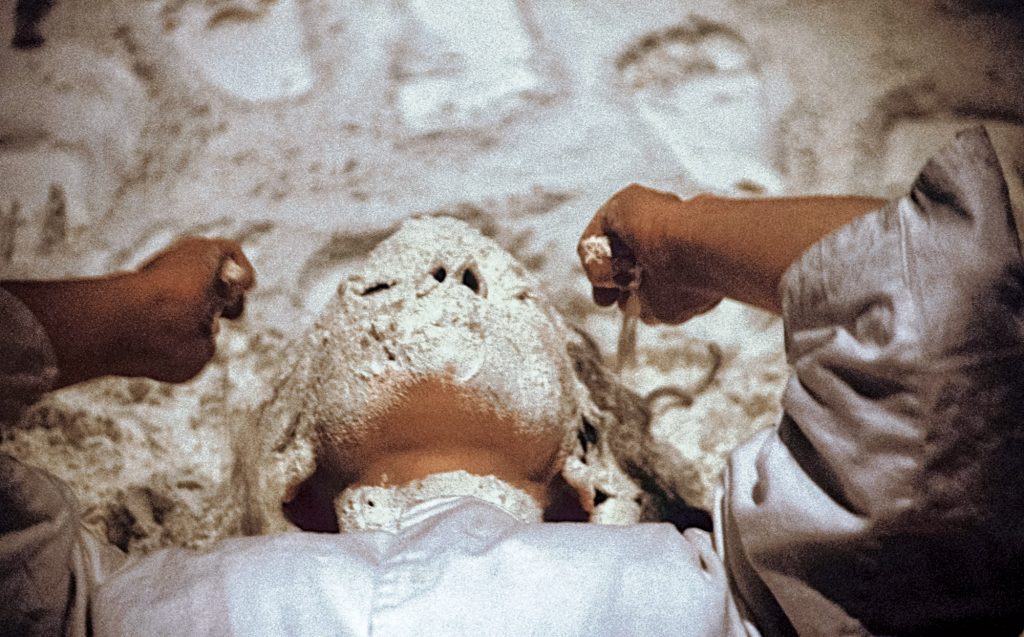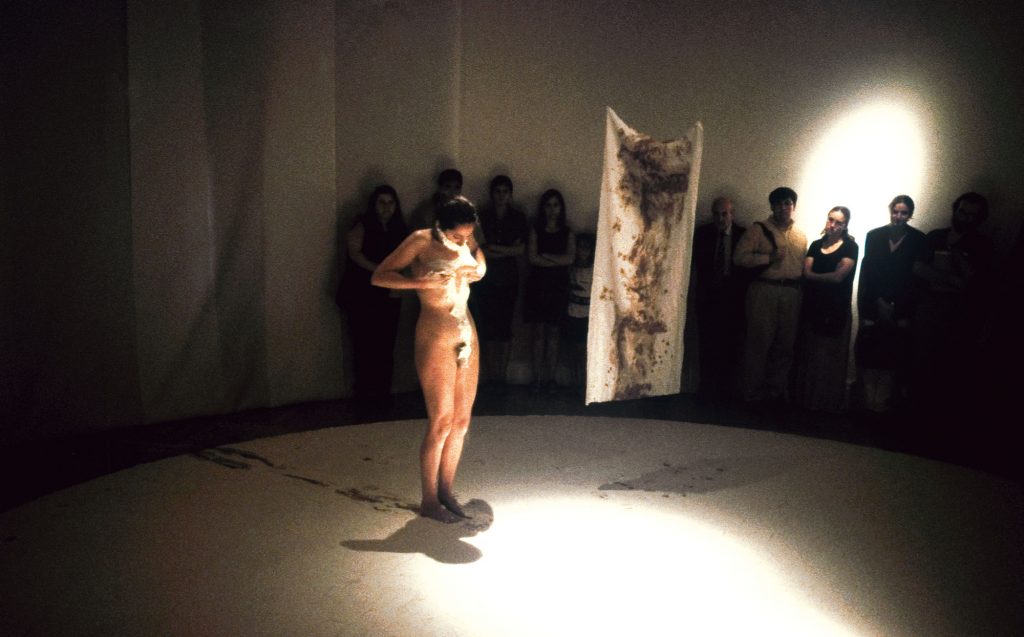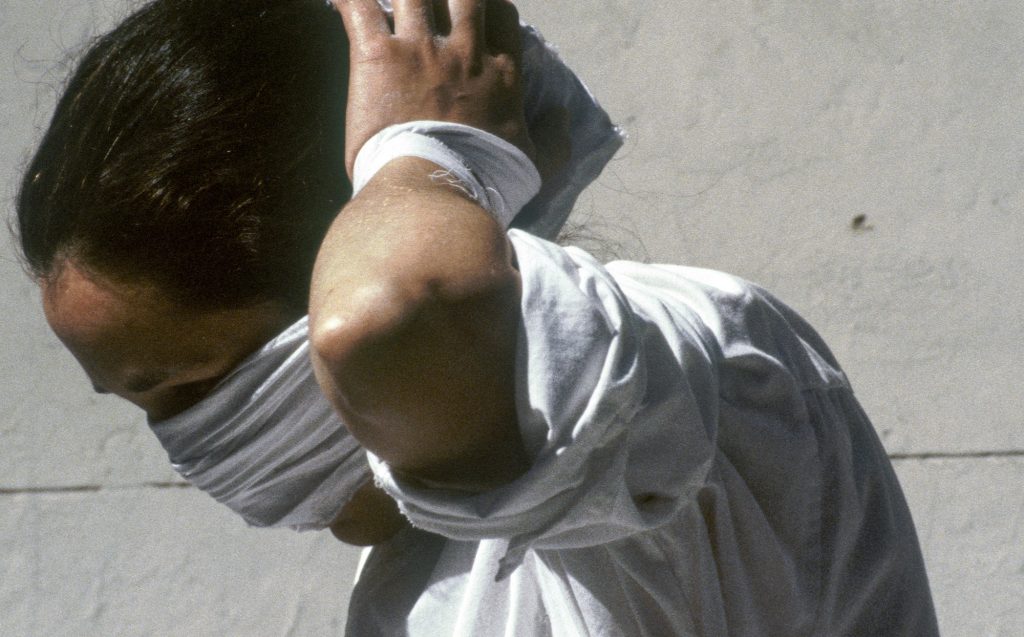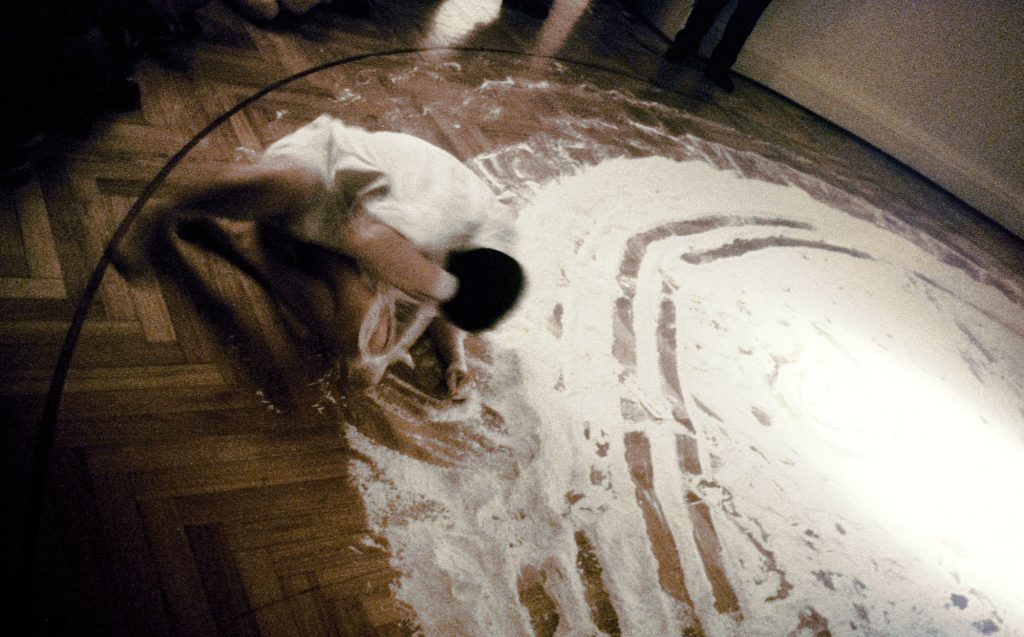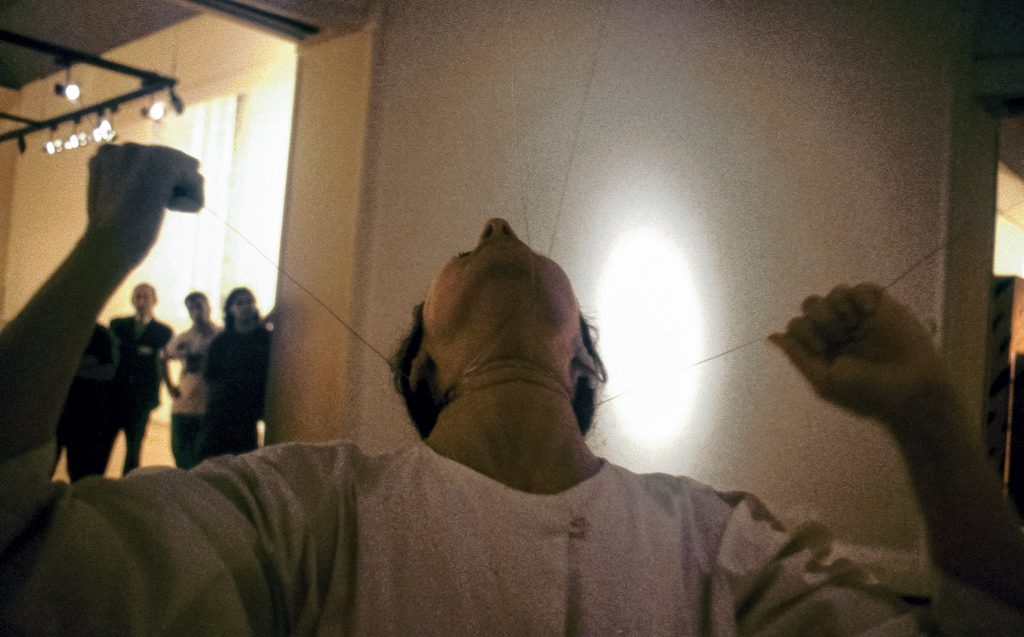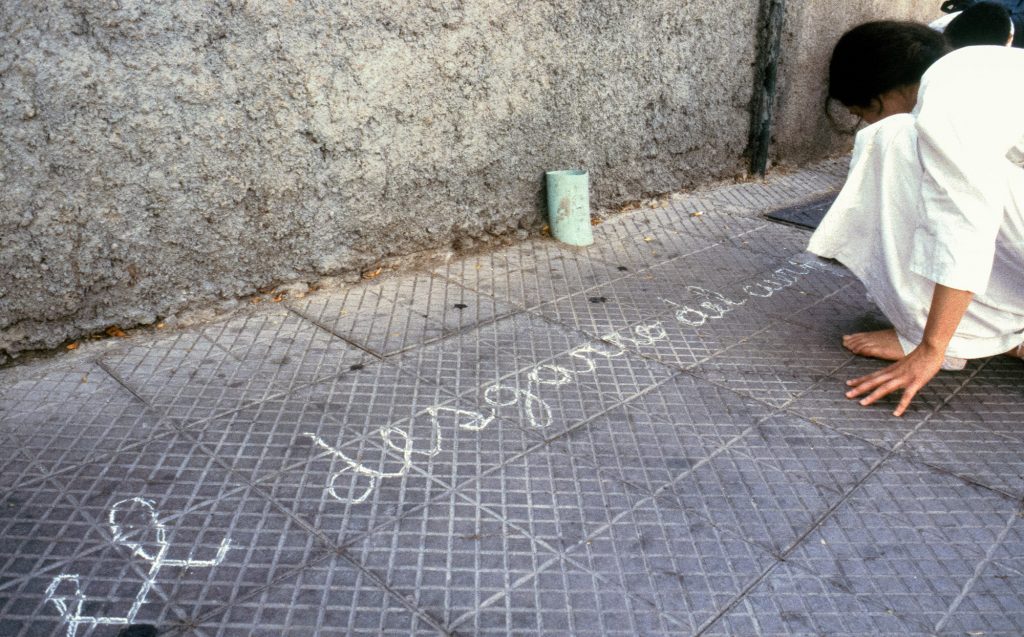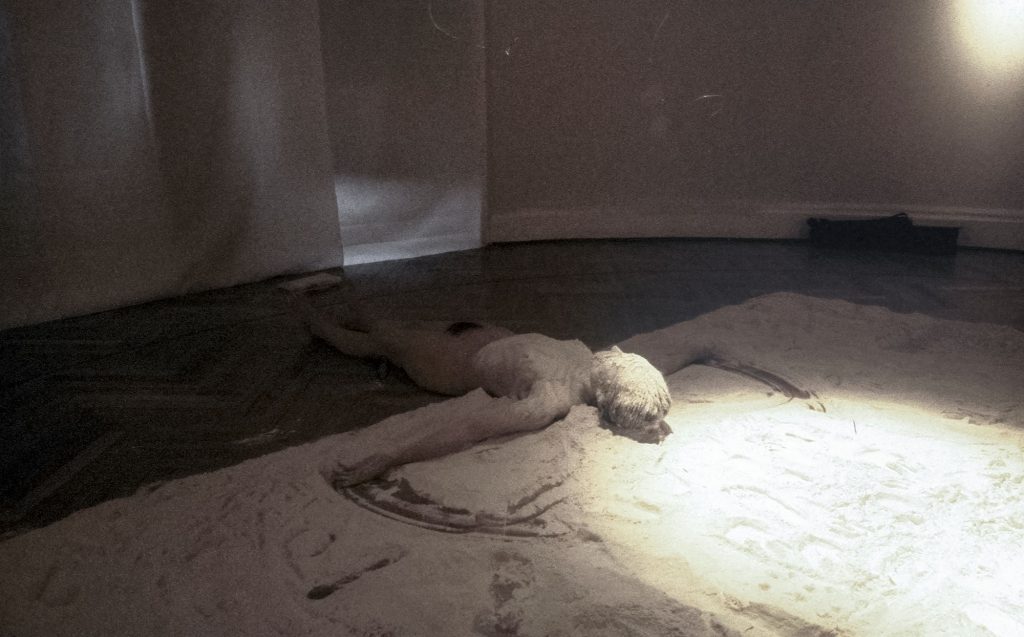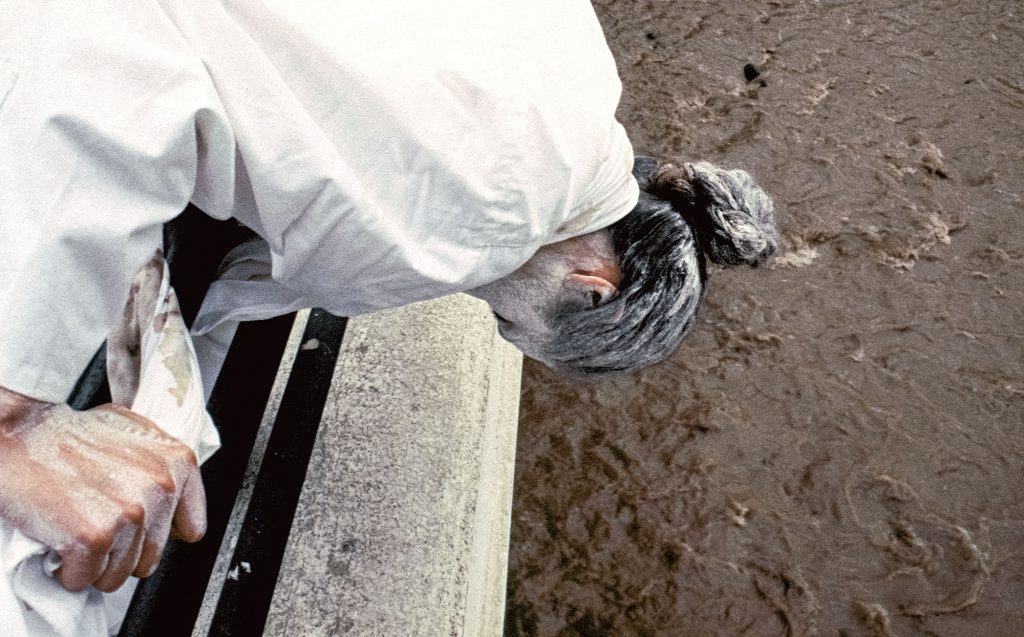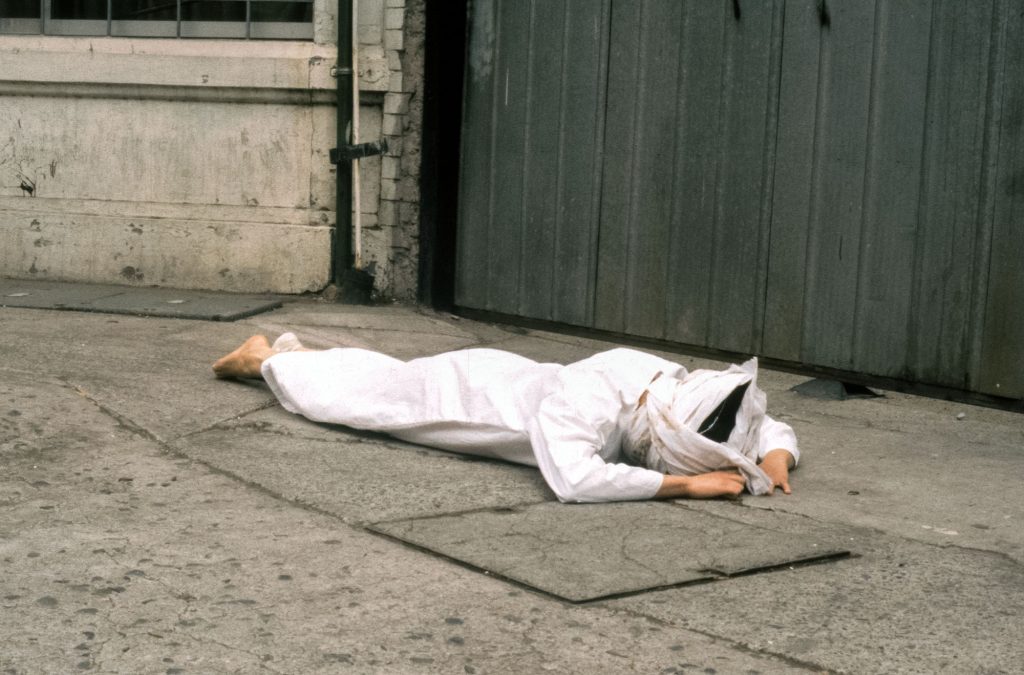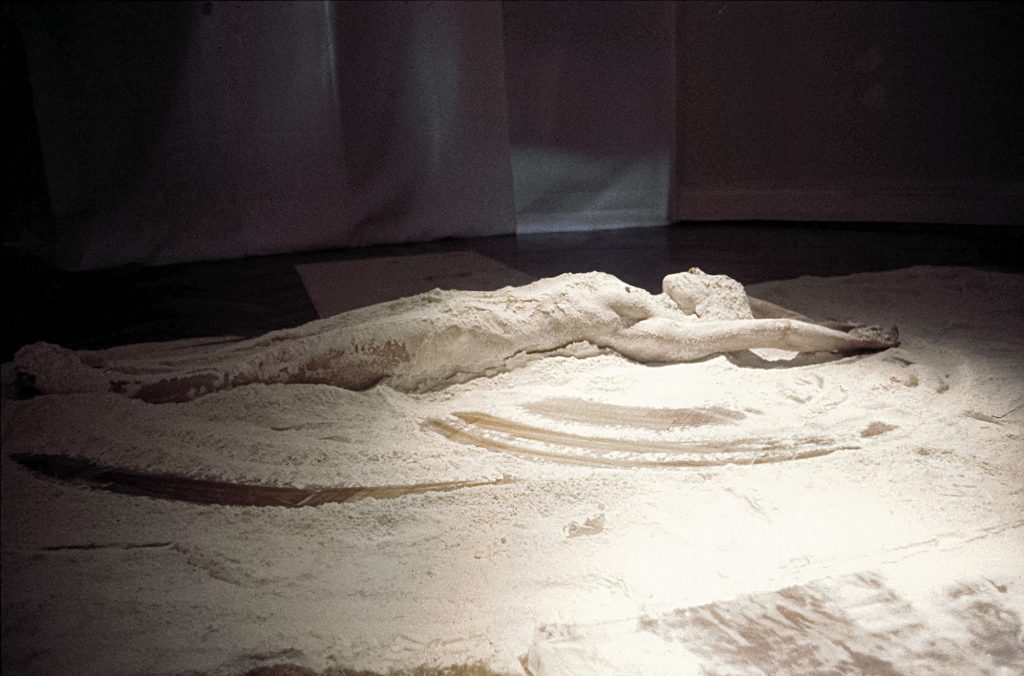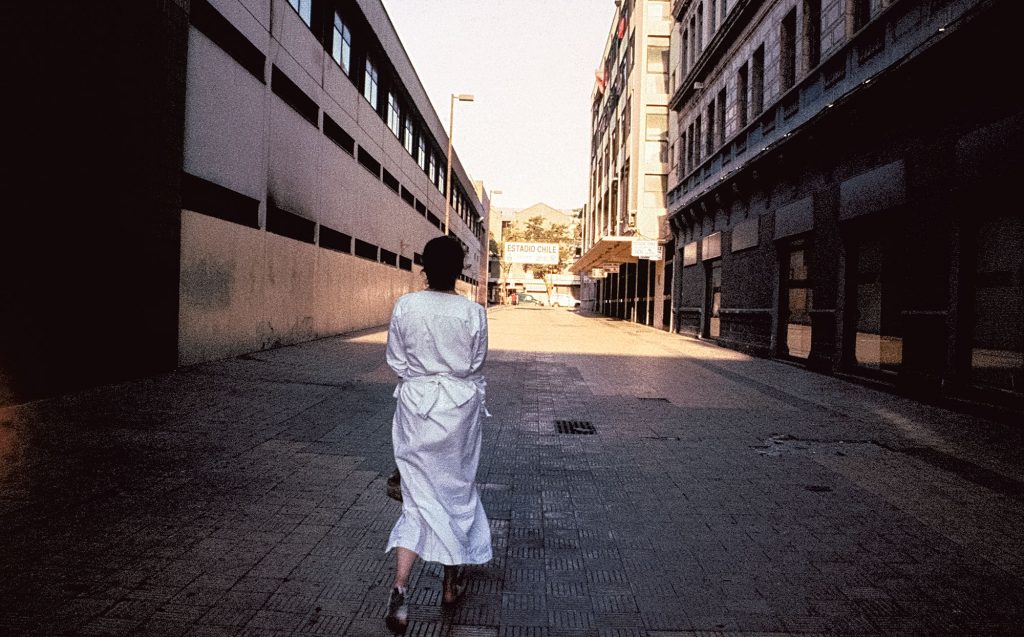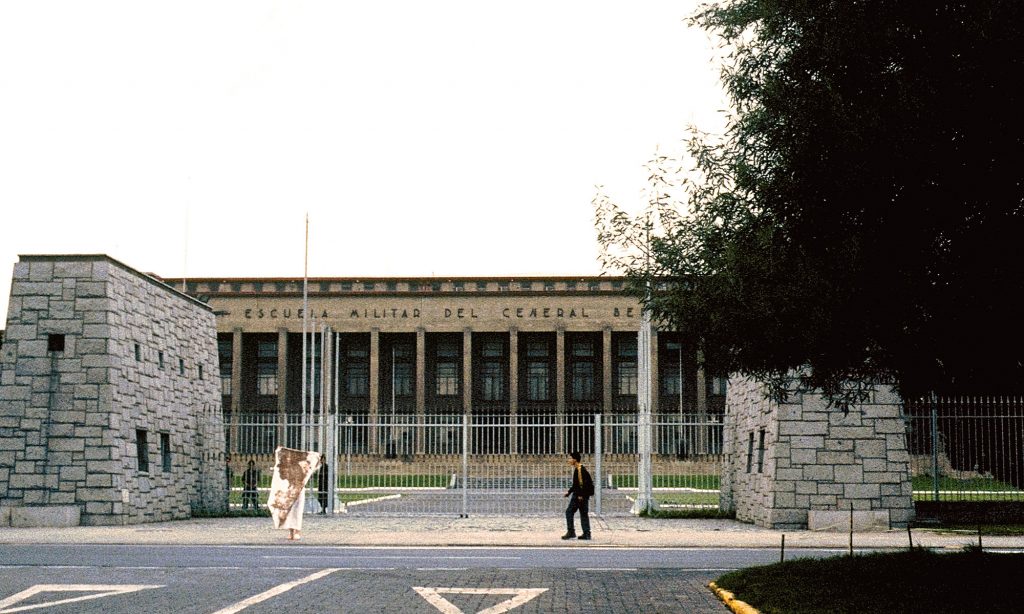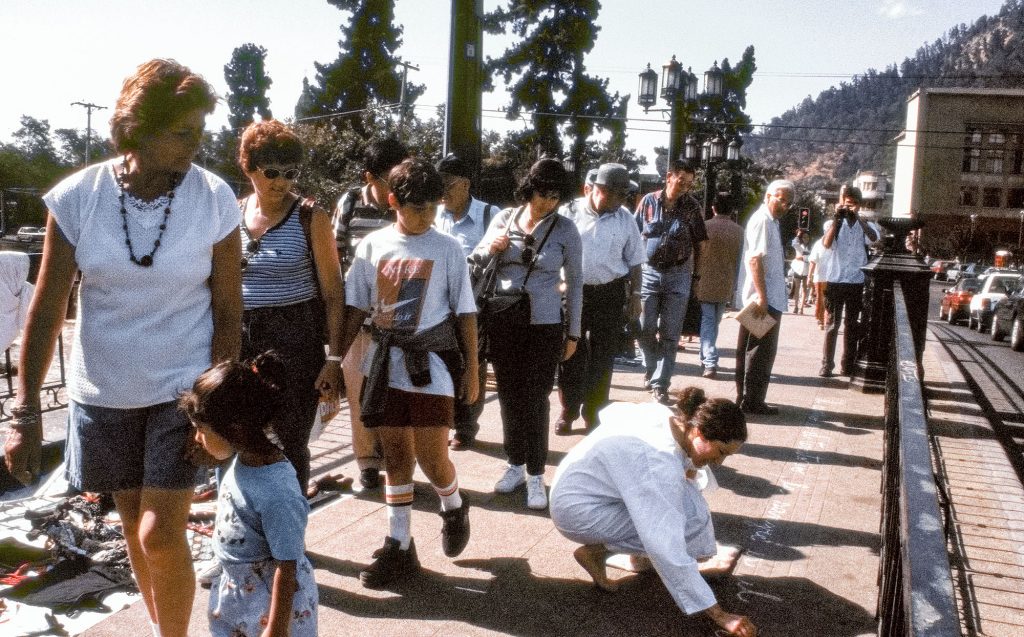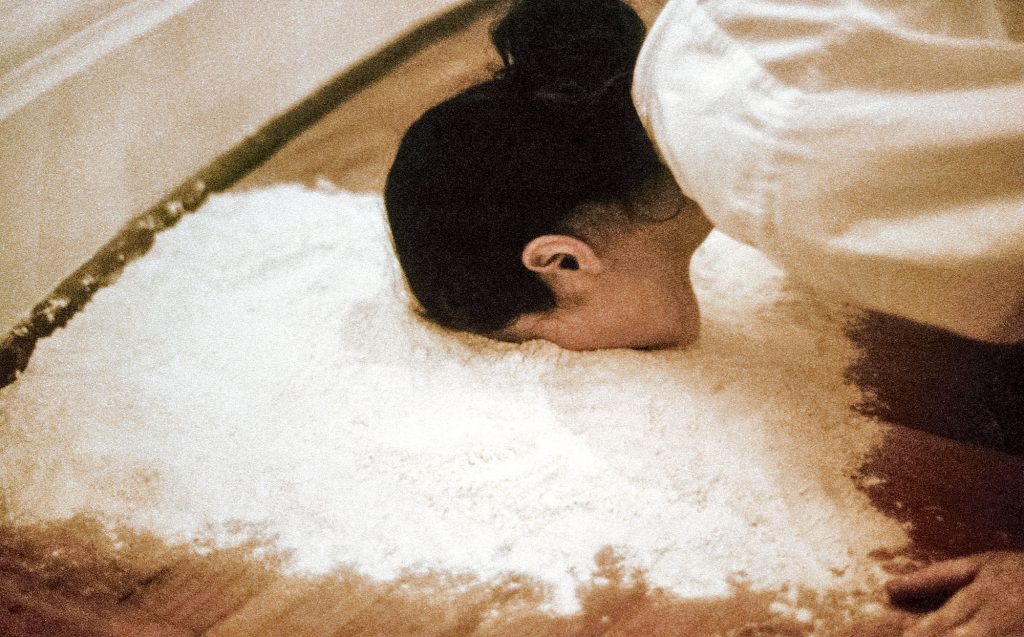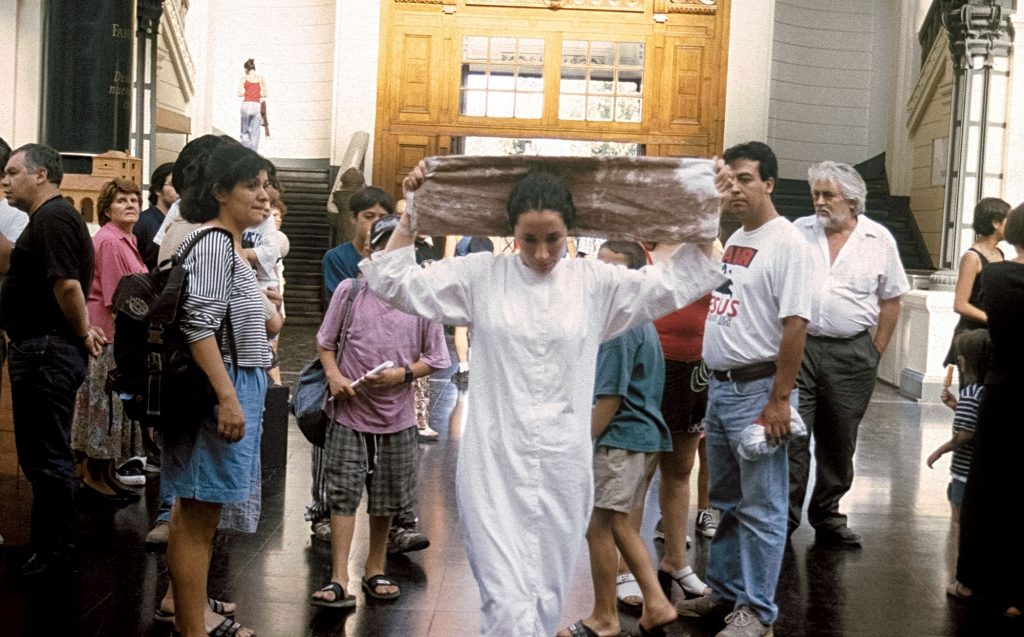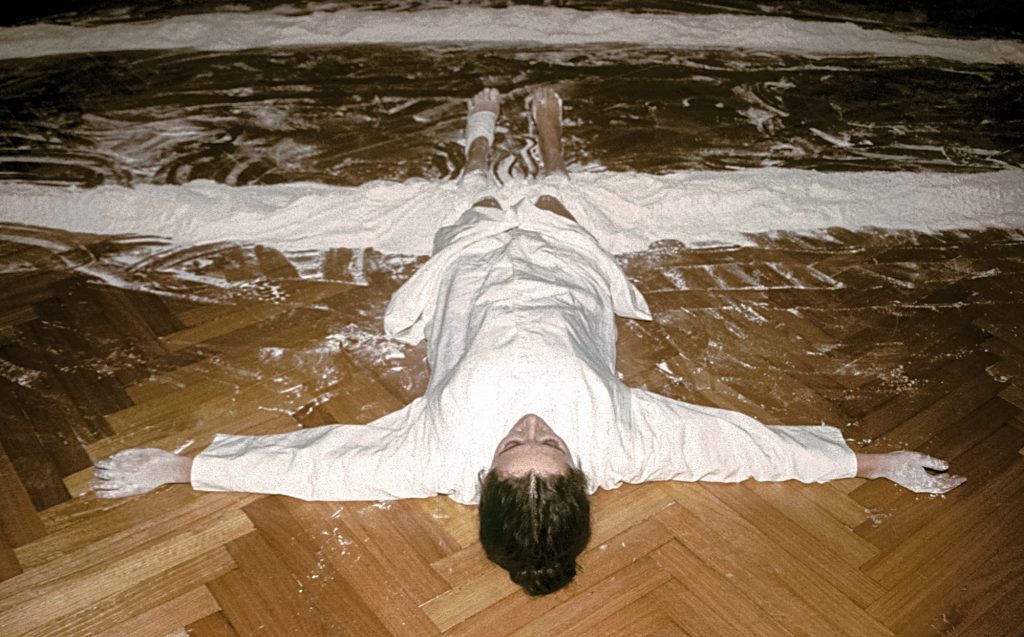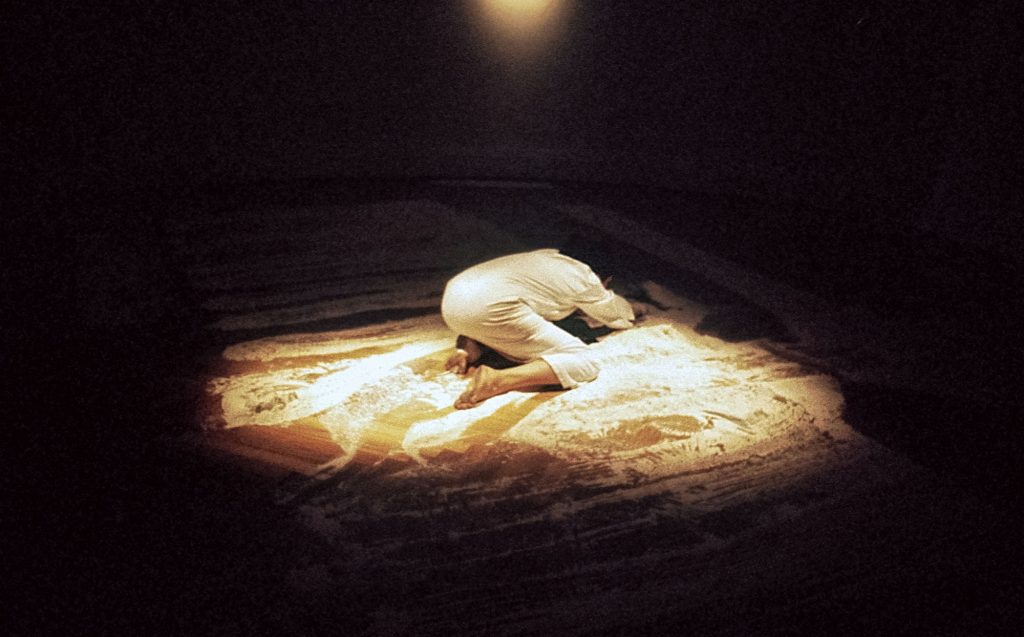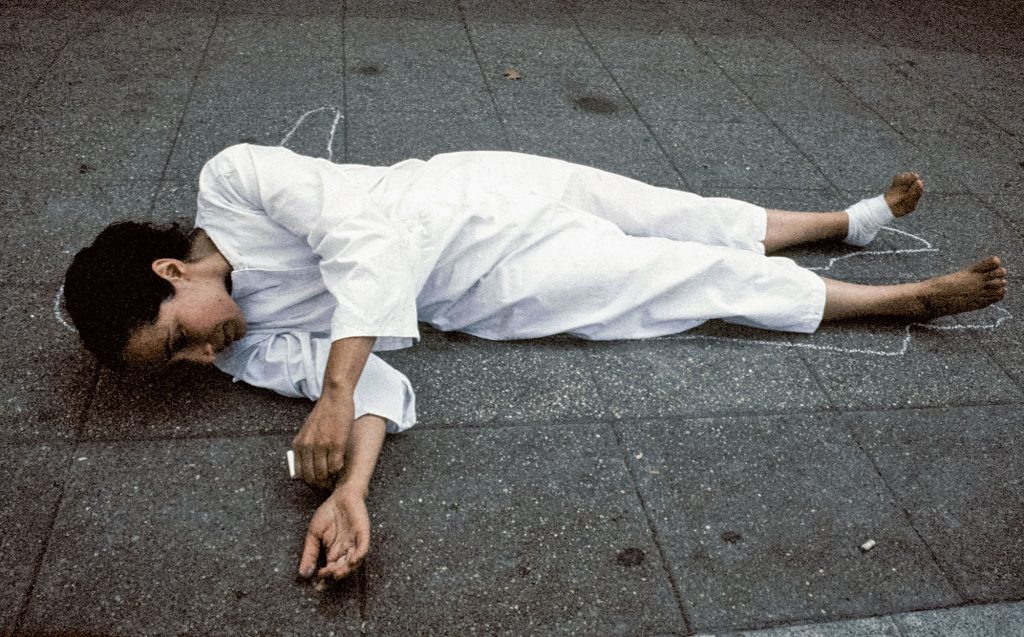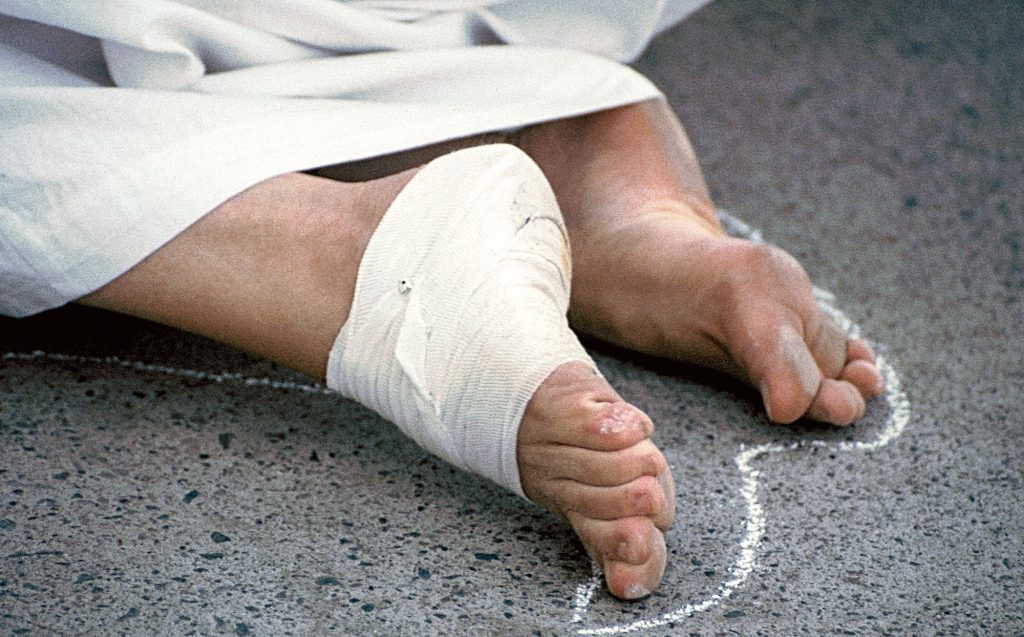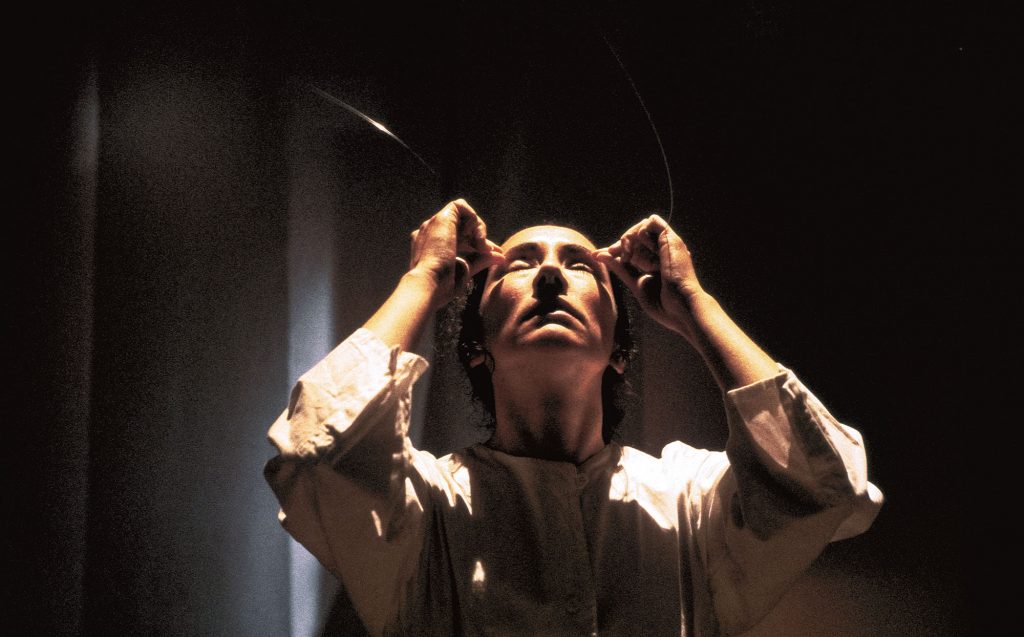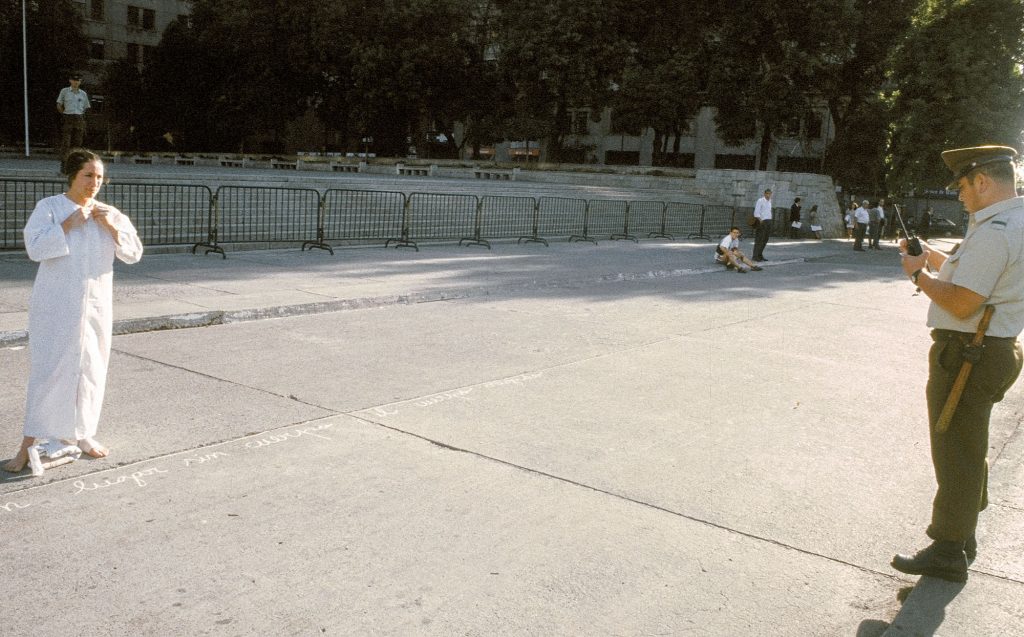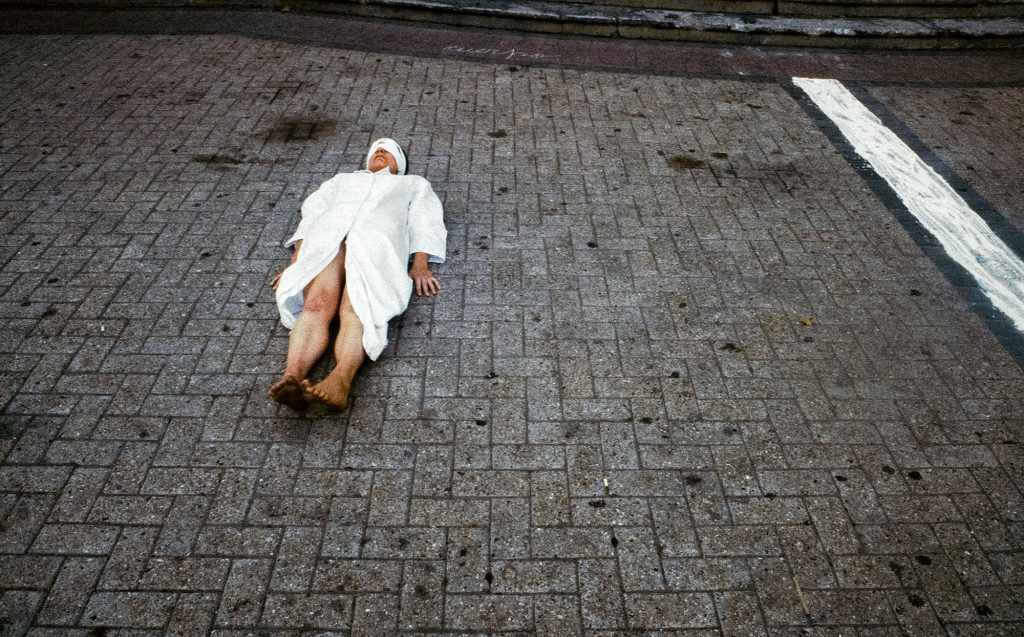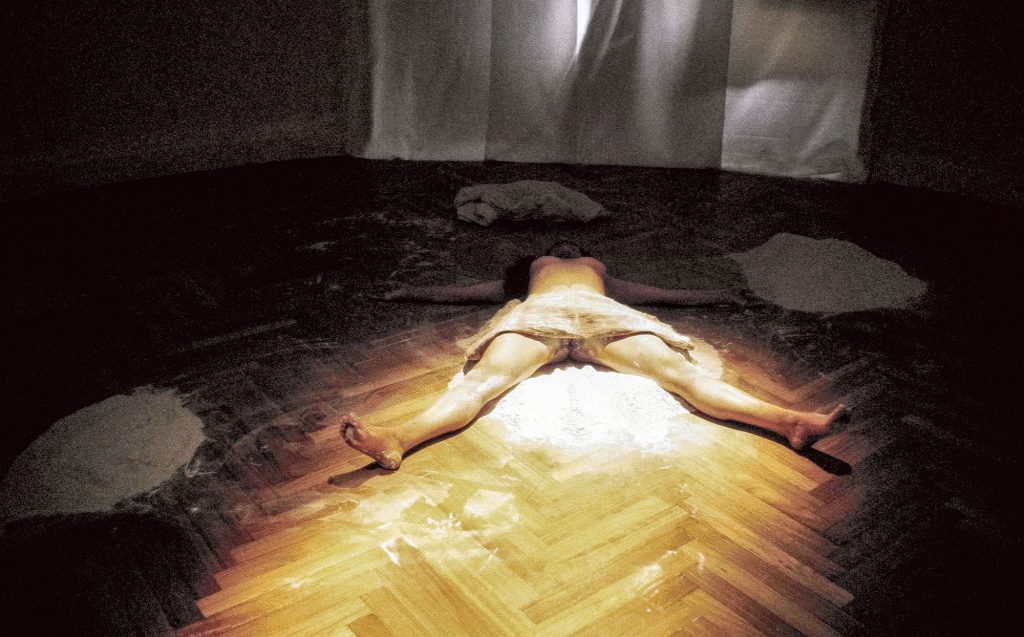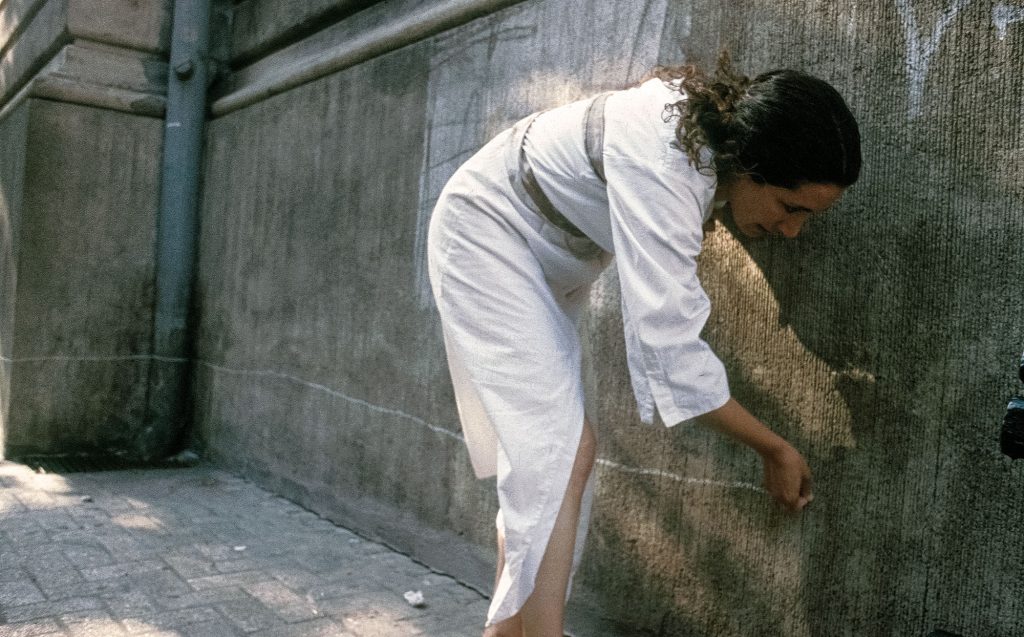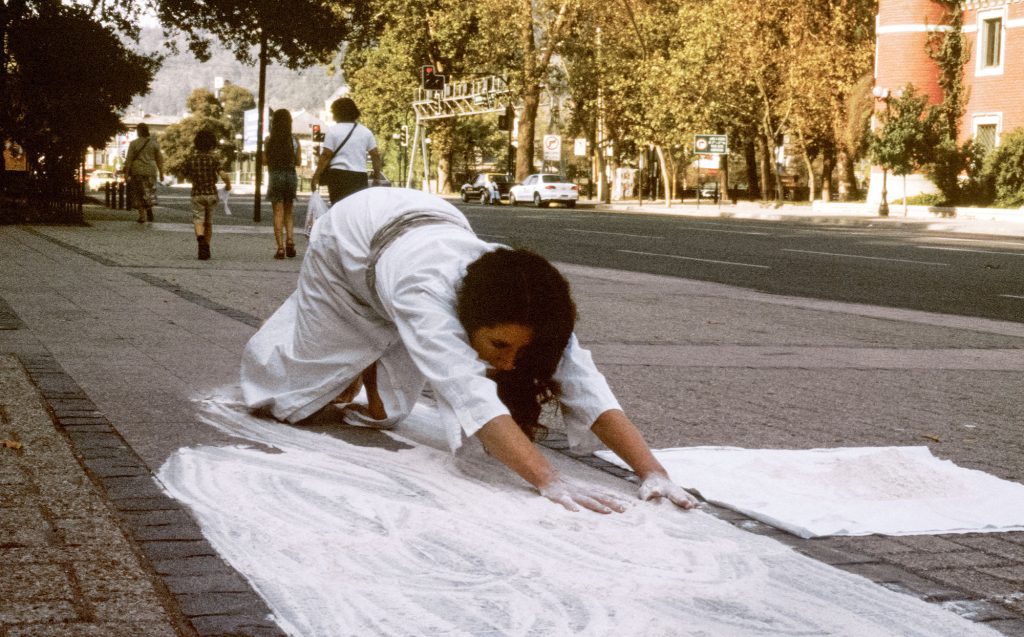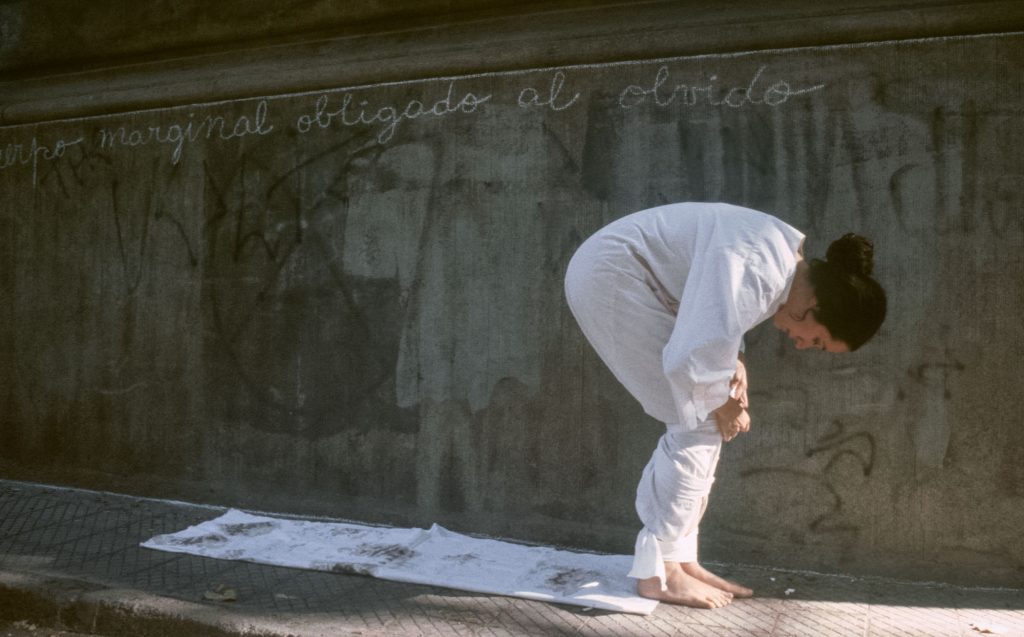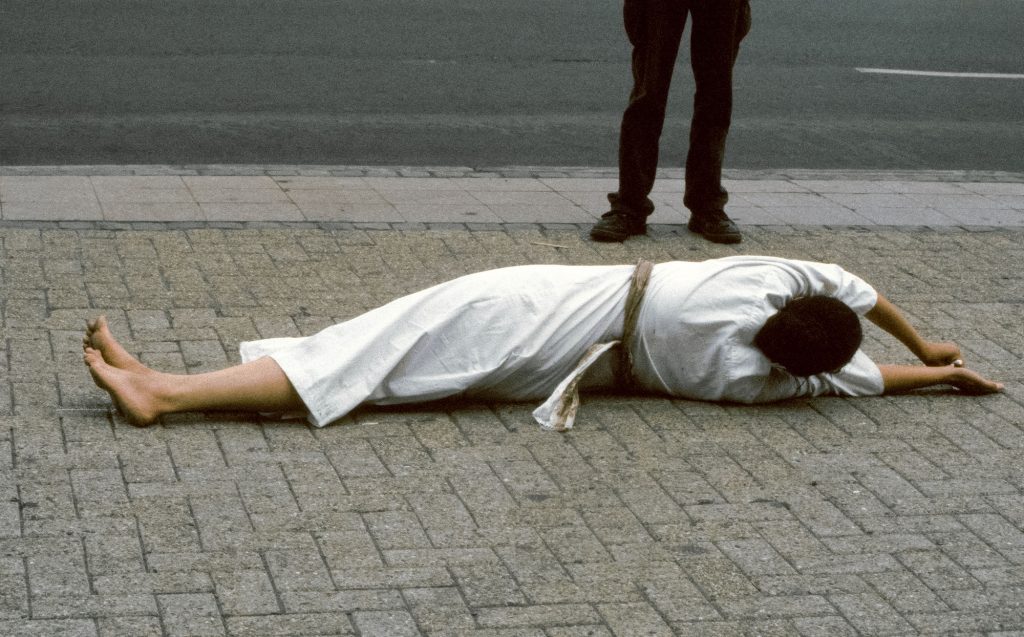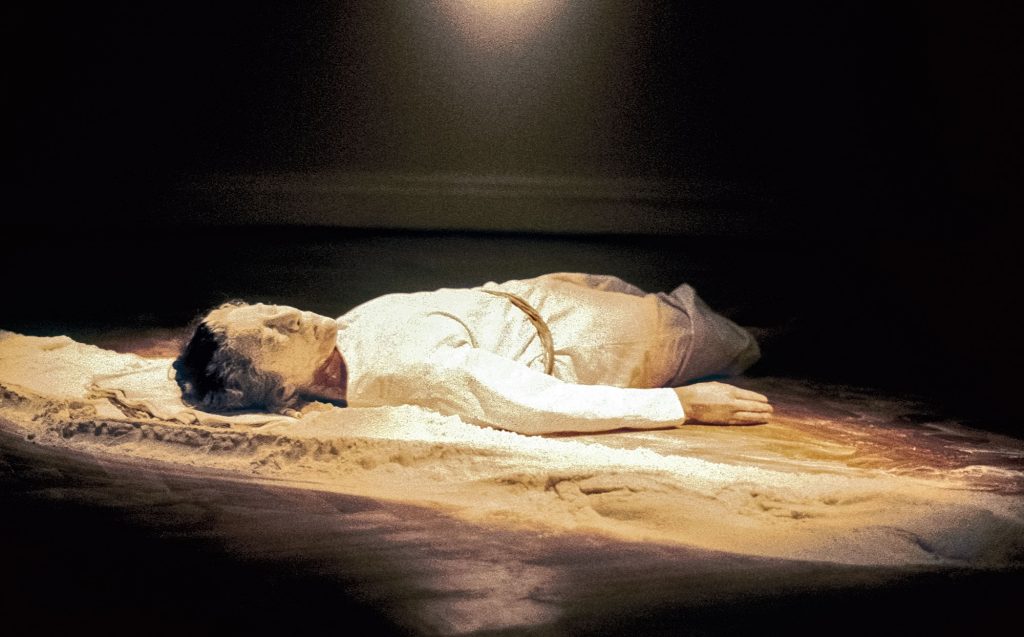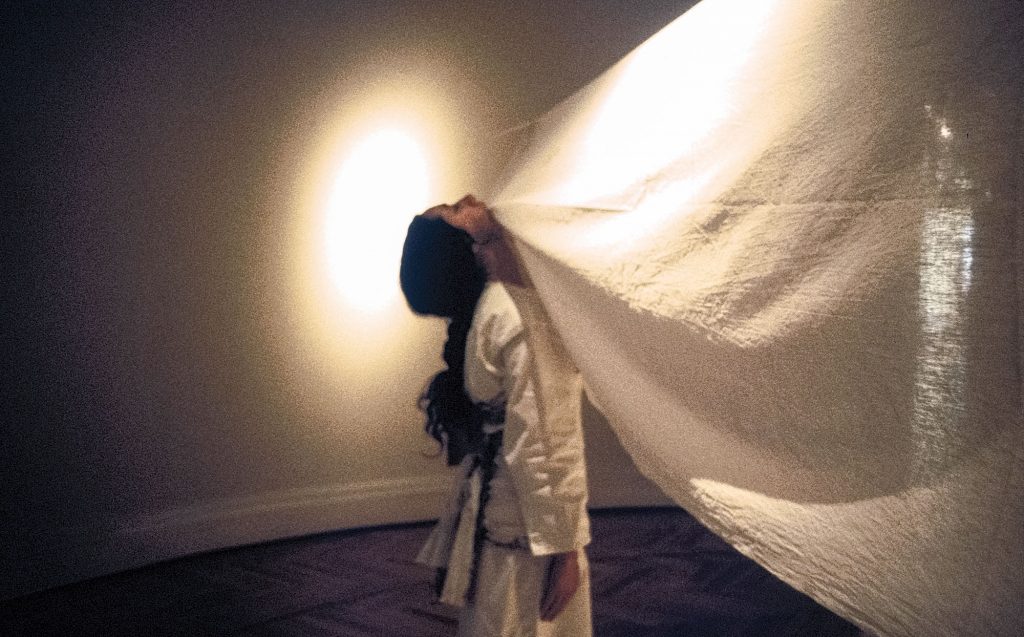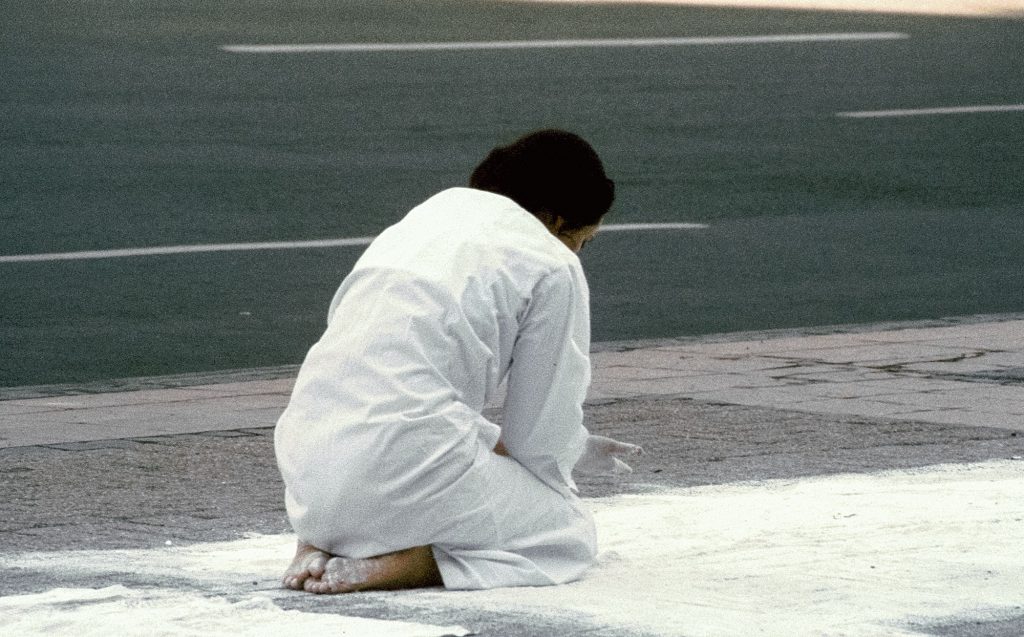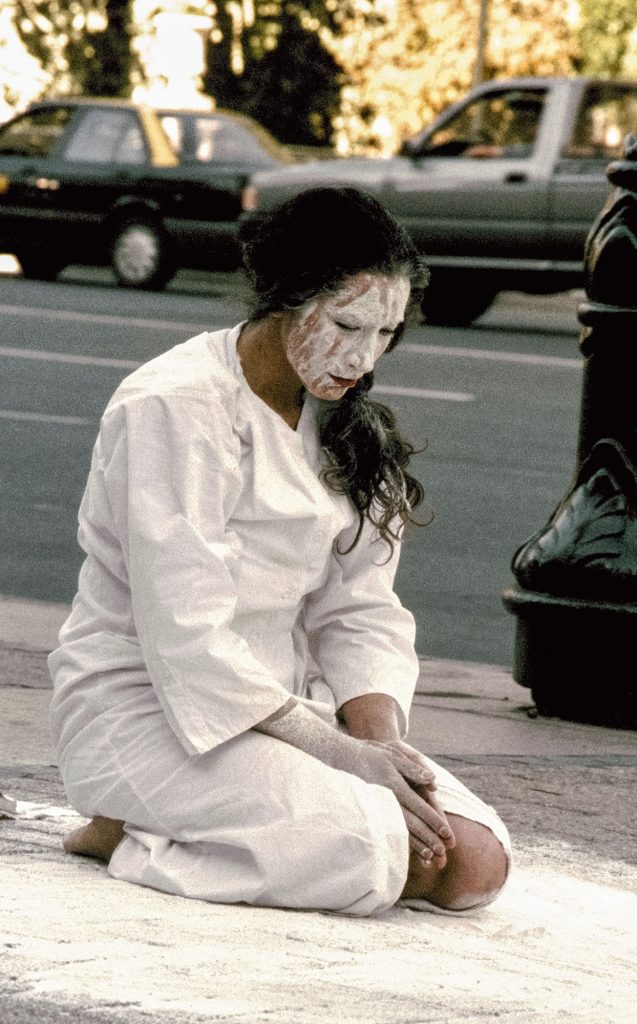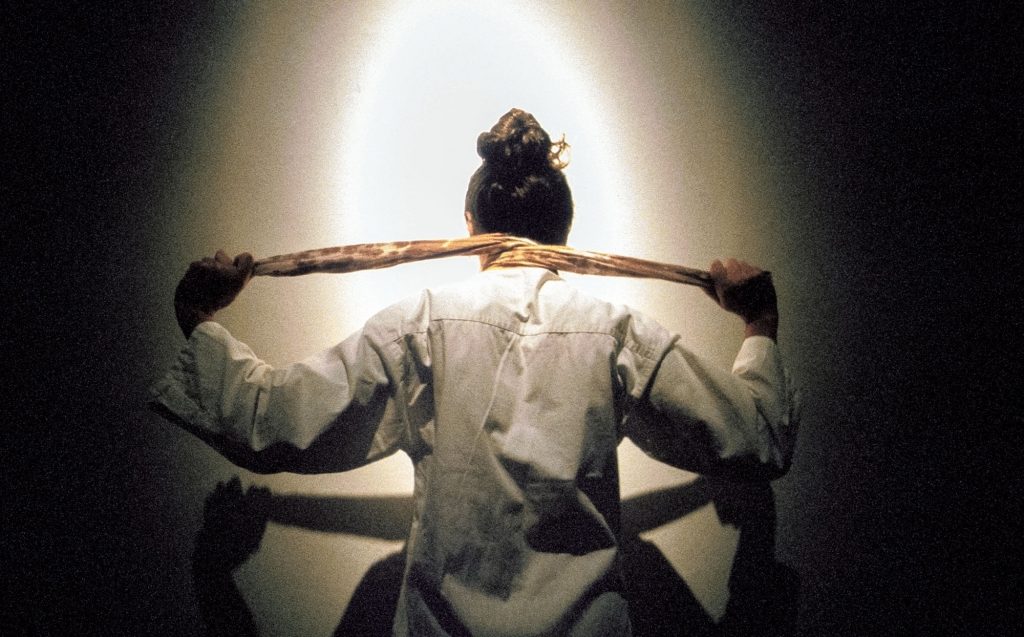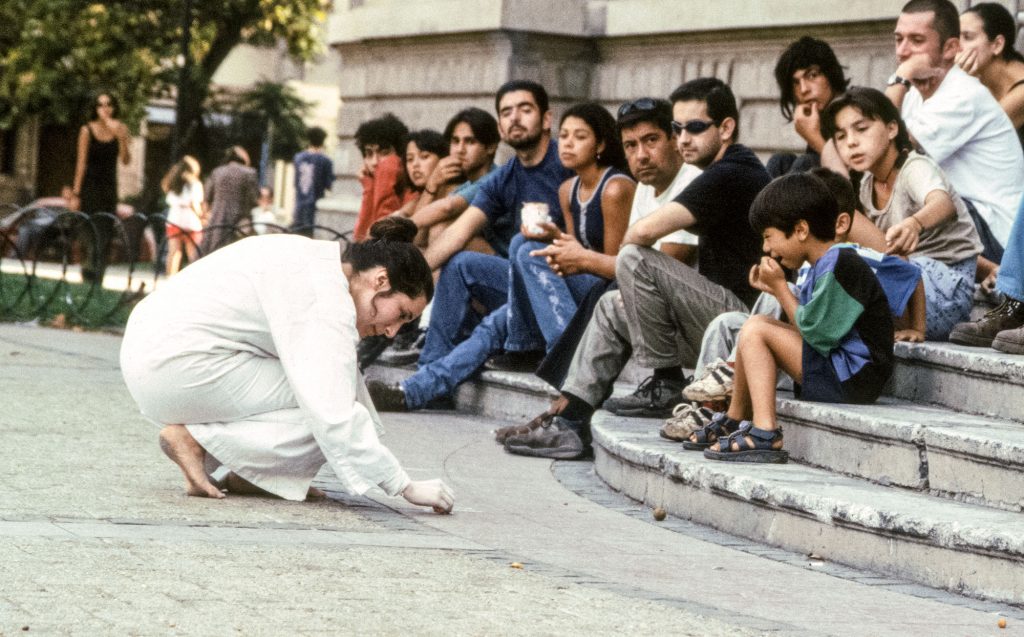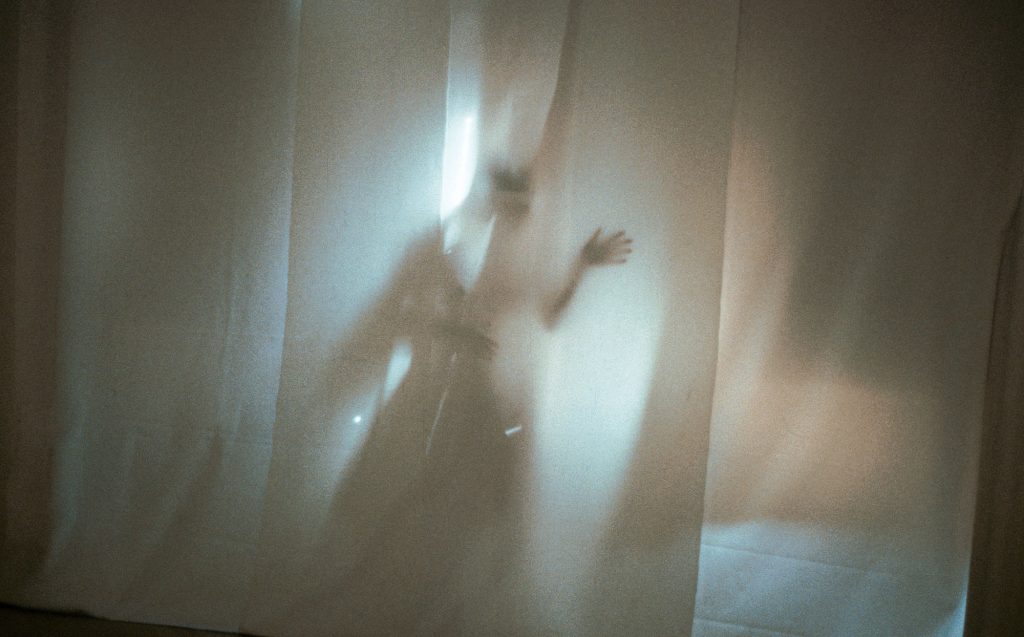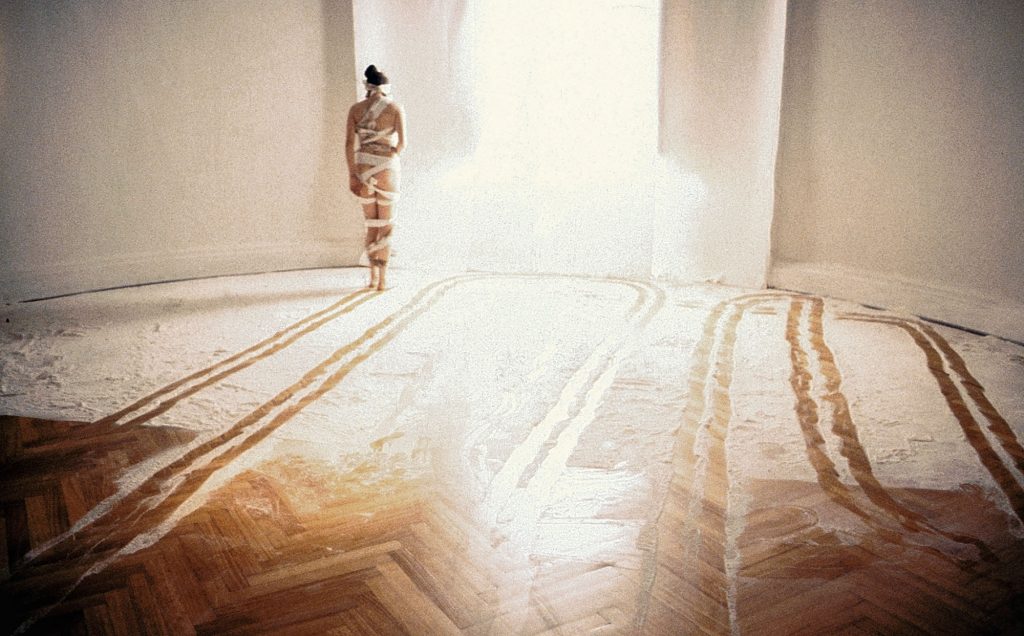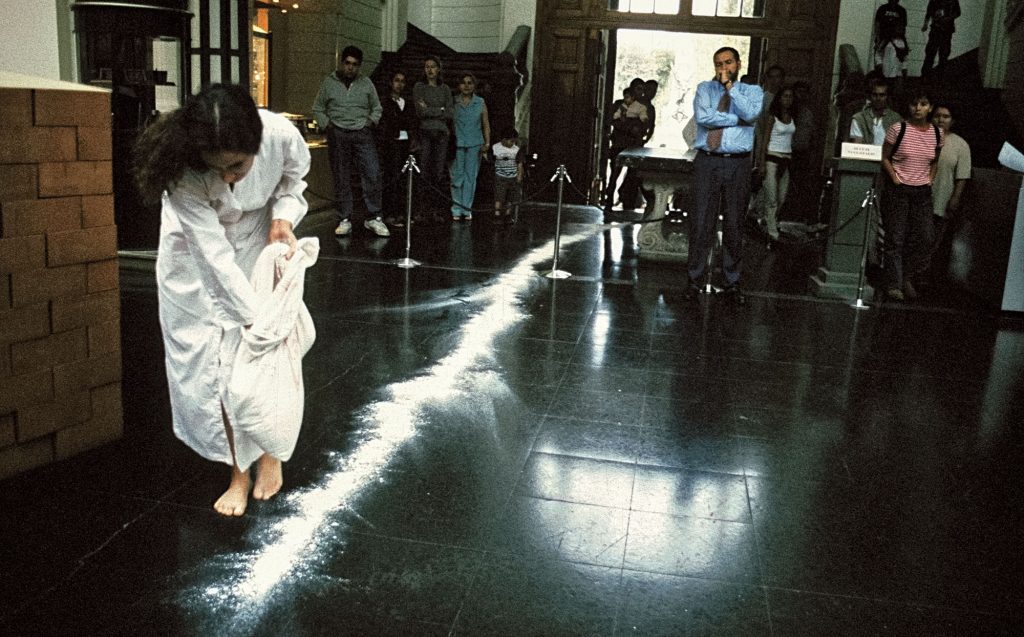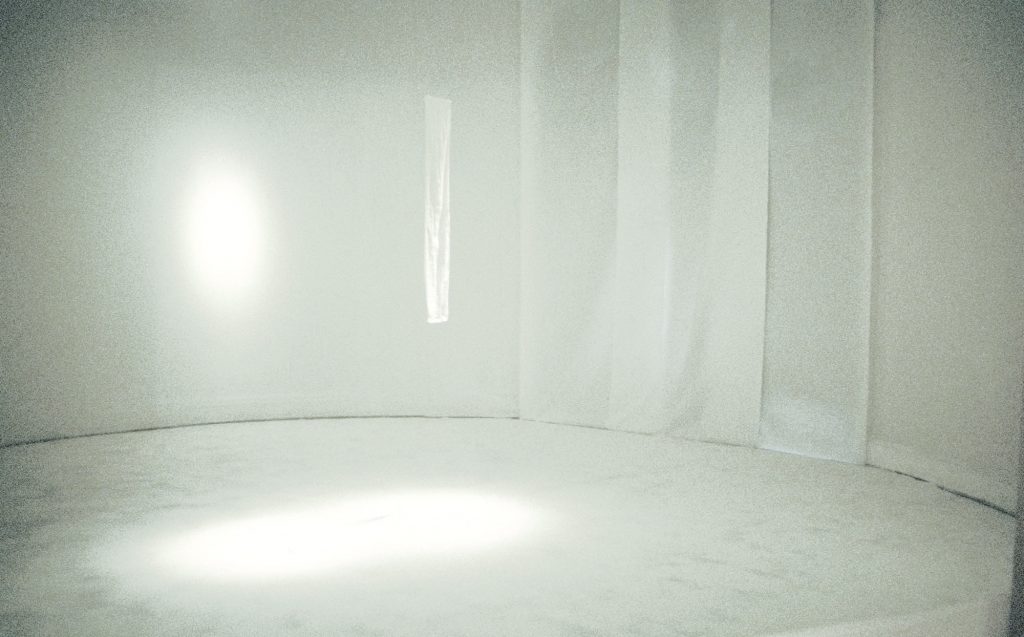Este trabajo consiste en una serie de 90 Performances-Instalaciones que realicé diariamente, durante casi dos meses, en el marco de la II Bienal de Arte Joven, en Santiago, entre el 7 de enero y el 7 de marzo de 1999.
Las Performances e Instalaciones fueron hechas dentro y fuera del Museo. En lugares relacionados con la tortura y la detención. Más las caminatas descalzas desde esos lugares al Museo y desde el Museo hacia esos lugares, a través de la ciudad de Santiago.
Yo caminaba siempre con algún signo físico de limitación del cuerpo, amarrando mis piernas o mis brazos, etc., caminaba kilómetros en silencio y llevando un fragmento de un lienzo blanco manchado con sangre de animal del Matadero (a modo de sudario), que había usado 9 años antes, en la Performance: “La sangre, el río y el cuerpo”, en el Río Mapocho, altura Puente Pío Nono, Santiago, 1990. Lienzo que guardé durante 9 años y que posteriormente utilizo, desgarro, fragmento, anudo en estas acciones.
Para este ciclo hice una larga investigación sobre diversos métodos de torturas, practicados sistemáticamente en Chile durante la Dictadura Militar y que actualmente son usados en muchos países del mundo. Estos métodos de tortura forman la base de estas performances-instalaciones, en las que me acerco a los límites de mi cuerpo y a límites sociales, por lo tanto hay una vivencia del riesgo permanente. No hay ensayo.
Esta obra hace un viaje interior al dolor que subyace en la memoria colectiva, al dolor que fue infligido a miles de personas, por medio de la tortura y la sistemática violación de los derechos humanos en nuestro país.
Estas acciones exponen la memoria como un eco corporal y emocional, a través de actos mínimos mudos, va abriendo los pliegues de los recuerdos oscuros de esa cruda realidad, adheridos al organismo.
La memoria no es solo una actividad funcional de la mente, sino una experiencia corporal: “recordamos con el cuerpo”. Esa es la premisa de esta obra.
Esta obra es un trabajo circular, que de manera aleatoria llegó a componerse de dos fases:
La primera fase del ciclo es desde la Performance-instalación número 1 a la 49. Esta contiene lo más público de todo el trabajo, en consecuencia la mayoría de las intervenciones suceden en diversos sectores de Santiago, en lugares (que no eran tan conocidos en aquella época) donde hubo tortura o detenciones.
La segunda fase del ciclo es desde la Performance-instalación número 50 a la 90. Todas las obras de esta fase suceden en una sala redonda del Museo (que se denomina la rotonda ) y además directamente afuera del Museo. Esta fase es un retorno a lo más íntimo y personal. Siguiendo con el tema, pero ahora volcada a mí misma, vislumbro las fronteras físicas y psicológicas, en el mayor mutismo.
Las Performance-instalaciones son minimalistas, sutiles y a la vez extremas. Donde el horror y la belleza se transforman en un grito, en un rezo que se repite hasta la extenuación.
Las huellas de este trabajo quedaban expuestas 24 horas como una instalación, hasta que yo la volvía a intervenir al otro día, por acción de mi cuerpo. Se trata de una obra en continuo movimiento. Que en su accionar restableció y expuso un fragmento de la memoria histórica, a través de una elegía del cuerpo, basada en una realidad feroz.
Todas las Performances eran realizadas a las 18.00 horas, todos los días, en el Museo. Y a diversas horas en los lugares públicos. Aveces realizaba dos performances al día, una en la calle y otra en el Museo.
En todo este trabajo, solo utilizo harina, alambres, tiza y el lienzo con sangre de animal del Matadero.
Desde 1 al 7 de marzo queda la última instalación una semana expuesta al público. Es un espacio totalmente en blanco, todo el suelo está espolvoreado de harina, el último fragmento del lienzo cuelga del centro de la sala, cuyas entradas estaban bloqueadas. Los espectadores, solo podían observar la instalación desde los umbrales de las entradas. Son 7 días de silencio.
